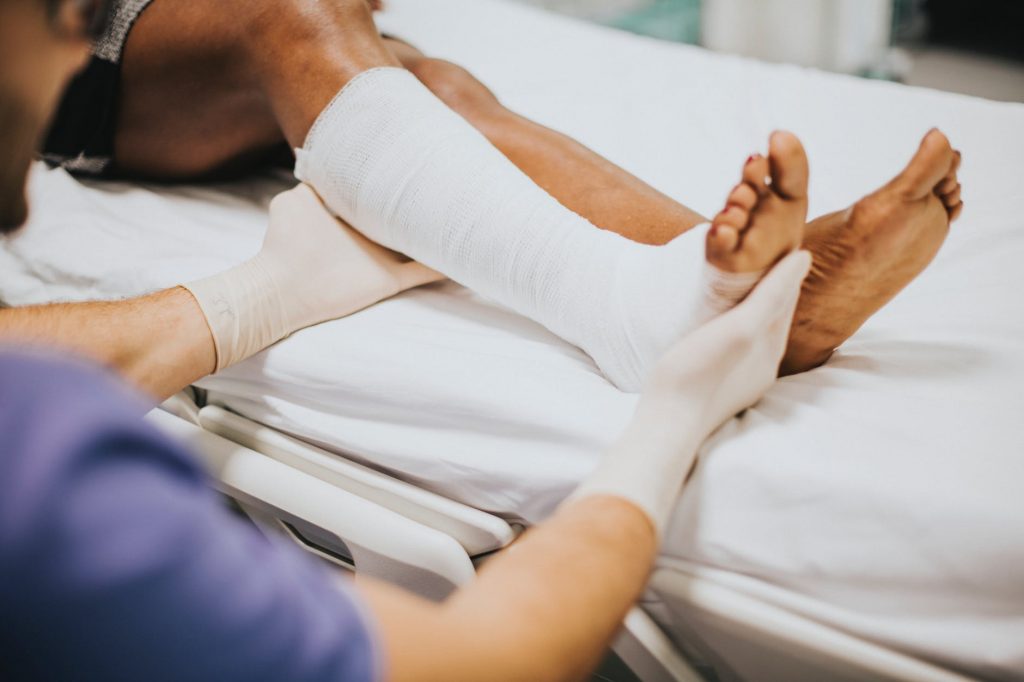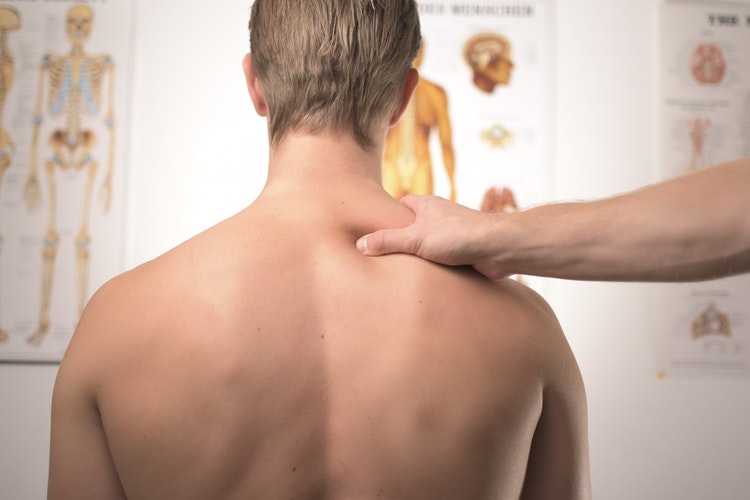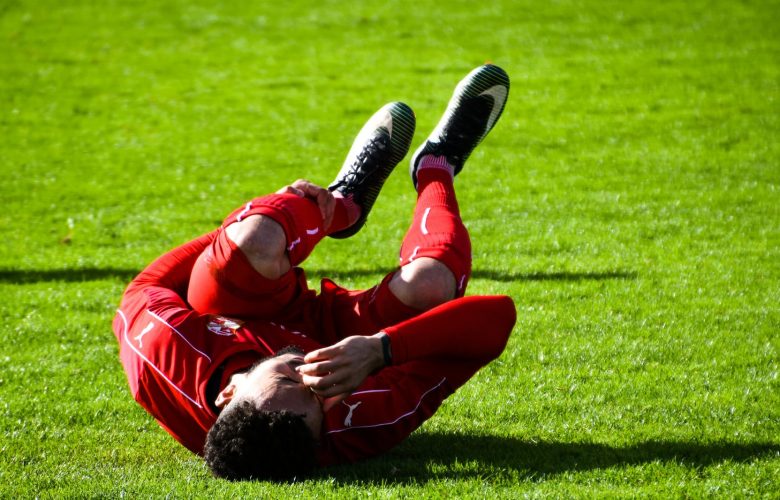In the midst of a high-intensity game, you are running towards the goalpost, seconds away from scoring a goal, and suddenly you buckle over with excruciating pain. Not only does the opportunity go begging, but it also puts an ugly question mark on the future of your career as a sportsman.
All is not always lost in case of a sports injury. A decade or two ago, it might have meant an end to a sportsperson’s career or dashing a prospective player’s hopes. But now, with the progress of medical sciences, many players bounce back from some of the most serious sports injuries.
This article will examine the treatment of the seven most common sports injuries.
1. Sprains and Strains

Sprains and strains are characterized by pain, tenderness or swelling around ankle, wrist, knee, leg or back. It is difficult and painful to put weight on the area that has a sprain or a strain. Ligament injuries or sprains are amongst the most common sports injuries. Over-stretching also causes strains. If your muscles are not used to certain movements, and you suddenly start with strenuous exercises or stretching, then it causes both strains and sprains.
How to treat Sprains and Strains?
You can usually heal from strains and sprains with self-care and without professional help. Sometimes, however, you may be required to get help from a physiotherapist. The most commonly used sprain and strain treatment therapy is known as RICE therapy.
Rest: The most logical step in this therapy is to stop any kind of strenuous physical activity and try not to put any weight on the sprained area.
Ice: Icing the sprained area with an ice pack (a bag of frozen vegetables) can reduce inflammation, bleeding into the tissues, and pain. The sprained/strained area should not be iced for more than 30 minutes, and keep the pack moving to avoid ice burns.
Compression: A bandage around the injured area also helps with healing.
Elevation: If the sprain is in the leg or an arm, it should be elevated with the help of pillows above the heart level to drain excess fluid from the sprained/strained area. Alternatively, professional help can be sought from a physiotherapist who can help speed up the healing by suggesting some exercises.
For more extensive injuries, you may want to use a sports massage therapist, such as a sports massage Jacksonville fl, to target the injured area. A sports massage therapist can focus on sports injuries such as muscle soreness, soft tissue injuries, and overuse injuries for playing sports.
2. Heel pain
Heel pain, also known as plantar fasciitis or plantar heel pain, is caused in athletes by a number of factors that include but are not limited to;
- Poor biomechanics in movement
- Slipping when running or landing too hard on a floor
- Playing on hard surfaces for a long period of time
- Muscle tightness and muscle strength imbalance
- Increased body weight and pronation
How to treat heel pain?
The choice of shoes matters a lot when dealing with heel pain. So opt for wide, comfortable shoes with a soft soles. Use a heel brace to reduce swelling and pain. Using an ice pack 2-3 times a day really helps a lot with pain and inflammation. Also, CBD can be very beneficial for pain like this as it has been found to have pain-relieving properties. Here is a list of the best CBD gummies you can buy if you want to check them out. Additionally, rest and elevation of the foot are equally beneficial in such a scenario.
3. Tennis Elbow
Tennis elbow is a muscular strain that usually goes away on its own. It is common amongst tennis and golf players due to the use of the same muscles for gripping for long periods of time. It can linger on for many months even with regular therapy because tendon injuries heal slowly. Surgical intervention to treat tennis elbow is rare but in extreme cases, athletes have to undergo surgery to get it treated.
How to treat tennis elbow?
Tennis elbow is treated both with invasive and non-invasive strategies. They include
- Avoid activities that require the use of those muscles that have been strained.
- If some activities are necessary then modify the way that they are performed.
- Painkillers or creams/gels containing NSAIDs are used to reduce pain and inflammation.
- Massage and exercise suggested by physiotherapists also help with tennis elbow.
- In very painful cases, steroid injections are used to manage the pain.
- Shockwave therapy is another treatment option for tennis elbow where high-energy waves are passed through the skin to help with movement and pain.
- Surgery is performed in extreme cases where the injured part of the tendon is removed for pain alleviation.
4. Dislocated Shoulder
A dislocated shoulder occurs when the upper arm pops out of the shoulder socket. This usually happens in sports where players have a throwing action with great force, such as in baseball, disc throwing, rugby etc.
How to treat a dislocated shoulder?
One should NEVER try to put back the arm in the socket as it can end up damaging nerves, tissues, and blood vessels. Avoid movement of the arm and place a soft blanket between the arm and side of the chest. The arm is replaced back to its original place by a procedure known as a reduction in a healthcare unit by a professional. This involves rotating the arm around the shoulder joint till it goes back into the socket. If the ligaments and tendons get torn during shoulder dislocation then surgery is often used for repair.
5. Concussion
A concussion can be best described as a mild injury to the head/brain due to a sudden jolt or bump to the head. It is common in many sports and affects both young school players and professionals. The healing time for youngsters, however, is longer compared to adults. A concussion does not cause any lasting brain injury, but it does interfere with certain brain processes, such as speech, memory, balance, and coordination.
How to treat Concussion?
The symptoms of concussion usually resolve on their own, but it requires serious medical attention in case of persistent headache, constant vomiting since the injury, behavioral changes, and memory problems. After the serious injury has been ruled out through CT and MRI, healing from a concussion requires complete mental and physical rest. Once you believe you have healed from the concussion, return to normal activities gradually. As advised by sports injury Brooklyn Center, an evaluation is necessary before going back to sports.
6. Back pain

Incidence of back pain is common amongst almost all individuals however, if you play a sport, certain body movements can put a strain on your back muscles resulting in back pain. If an athlete experiences back pain, it intensifies with time and is characterized by persistent stiffness and fatigue. Physical examination of bones, spinal cord, and nerves help in diagnosing the severity of back pain.
How to treat back pain?
Back pain management requires an exercise regime to strengthen back and core muscles. Movement and posture improvement therapy also goes a long way in treating back pain. Biostimulation is a back pain treatment strategy that is a non-invasive light source treatment. In this treatment method, a single wavelength of light is generated without the generation of heat, sound, or vibration. It accelerates the repair of connective tissue and reduces inflammation.
7. Hamstring Injury
Hamstring injury is one of the most common injuries in sports and can be most often seen in sportspersons who are involved in activities such as sprinting, jumping, and lunging. It has three grades of severity, mild, moderate, and severe. This kind of injury involves a tear to the thigh muscles or the tendons connecting these muscles to bone. The treatment time of a hamstring injury depends upon the severity of the muscular or tendon tear.
How to treat hamstring injury?
Since this injury in fact is a muscular strain, the treatment strategy is similar. You will need RICE (Rest, Ice, Compression, and Elevation) for the leg that has been strained. This will help in the healing of the injured tendons. NSAID gels and creams also help with pain relief and inflammation.
When you are a sports player, you should be aware of your body’s limitations to effectively exercise all the preventive measures that will help you avoid injuries that can affect your sporting career. Most professional athletes have a personal trainer who helps them reach their maximum potential without any long-lasting adverse effects on their bodies. A positive mindset is also essential to combat sports-related injuries.
Cover Image credits: Photo by Pixabay from Pexels
